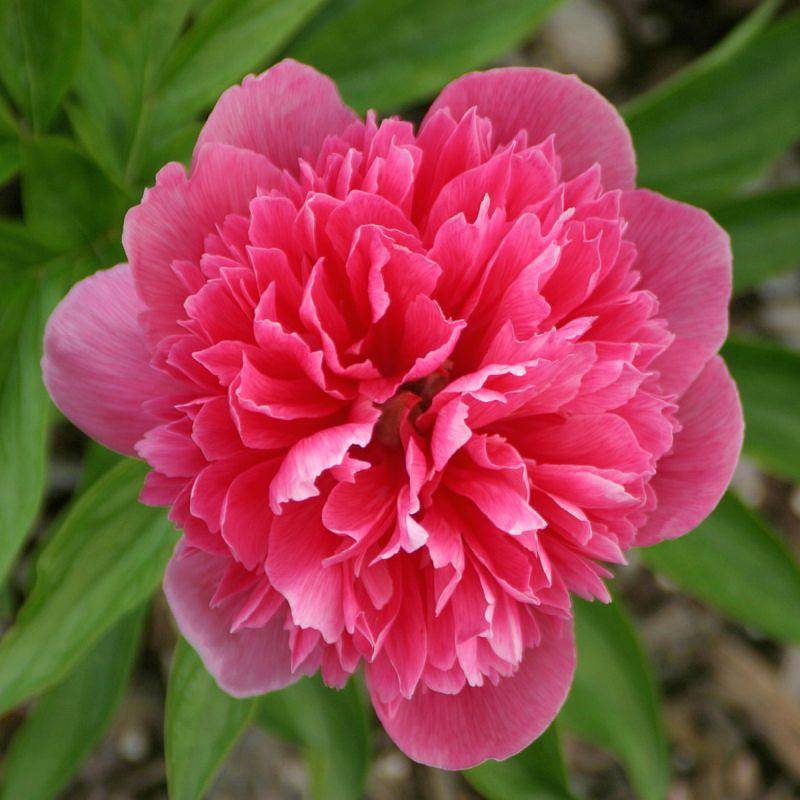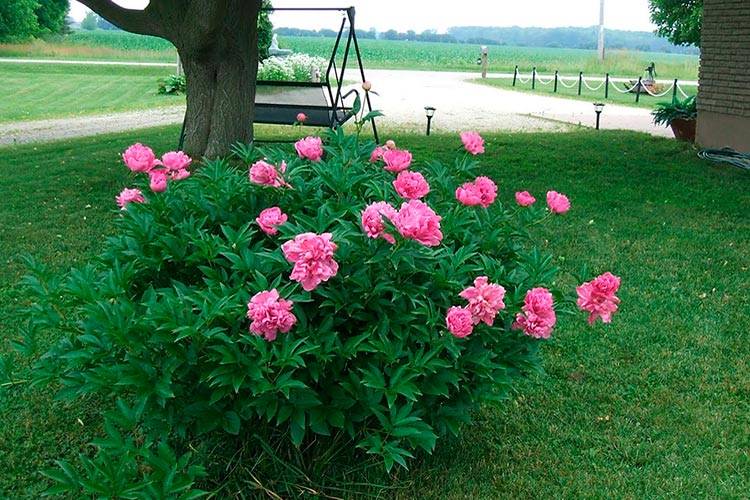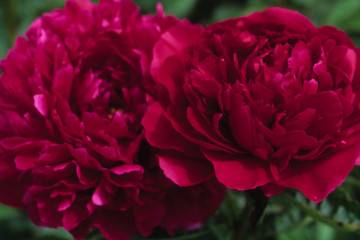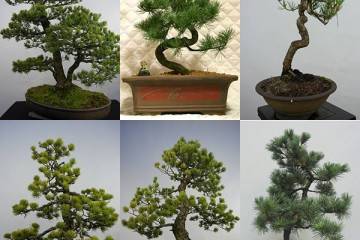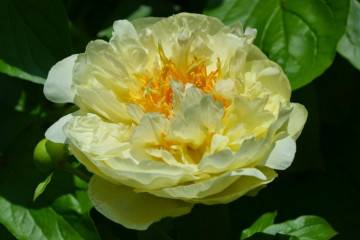Peony Rosea Plena (Paeonia Rosea Plena) in the garden
Content:
Peonies adorn many flower gardens. These unpretentious and beautiful plants are resistant to low temperatures, diseases and pests. The article describes the Rosea Plena peony - one of the most popular varieties in central Russia.
Peony Rosea Plena (Paeonia Rosea Plena) - what is this variety, history of creation
Herbaceous perennial. Possesses medicinal properties. Height up to 100 cm. Single large flowers can be double, semi-double and simple. The diameter of the flowers reaches 15 cm. The color of the petals is pink. Large, dark green, strongly dissected leaves.
Brief description, characteristic
The powerful fleshy root tubers of the peony are located deep enough in the soil, so the plant easily tolerates frosts down to -40 ºС without additional insulation.
Flowering amicable, short-lived. Up to 20 silk flowers with a delicate aroma can be opened on the bush at the same time.
Advantages and disadvantages of the variety
Like any other, the peony Officialis Rosi Plena has its own characteristics.
Benefits:
- friendly flowering;
- high decorativeness;
- frost resistance;
- does not need frequent transplants;
- unpretentiousness.
Disadvantages:
- fades quickly.
Use in landscape design
Peony Officinalis Rosea plena is planted:
- in groups with other varieties of peonies;
- in prefabricated compositions;
- as tapeworms.
The blooming herbaceous peony of Rosi Plena is good on its own, and after flowering, its rich greenery serves as an excellent backdrop for other flowers.
Growing a flower, how to plant it in open ground
To grow healthy, abundantly flowering bushes, you need to follow certain rules.
Planting by root cuttings
Root cuttings - areas of rhizomes, 2-5 cm long, necessarily containing a bud and root. Harvesting of planting material is carried out in July-August. Propagation by root cuttings is carried out as follows:
- Dig up the rhizome, remove old roots and earth.
- Divide the rhizome into cuttings.
- Disinfect by soaking for 2 hours in a pink solution of potassium permanganate.
- Dry the cuttings, roll the slices in crushed activated carbon (or ash), leave overnight.
- In the prepared bed, plant the cuttings at a distance of 15 cm from each other.
What time is the boarding
The fastest and most convenient way to propagate a peony is to divide the rhizome. The most suitable time for planting a peony: late April - early May and late August - early September.
Location selection
Can grow in one place and feel great up to 30 years old. Conditions for landing:
- open, sunny place, in the shade the peony will not bloom;
- nutritious soil, loamy;
- low groundwater table;
- high-quality drainage;
- absence of other perennials, buildings nearby.
How to prepare the soil and flower for planting
The preparation of the landing site is carried out in a month:
- Dig a hole with a depth and diameter of 60 cm.
- Drainage is laid at the bottom (expanded clay, broken brick).
- The hole is filled ½ with a mixture of peat, deciduous soil, sand, forming a mound.
Plant preparation:
- All the stems of the selected plant, at least 3-4 years old, are cut off.
- Carefully dig out the rhizome together with the adventitious roots.
- Shake the soil off the roots so that the buds are visible.
- The accessory roots are cut, leaving 10-12 cm.
- Remove rotten, dried out areas by sprinkling the cuts with crushed coal.
- We divide the rhizome into parts with a pruner or a sharp knife so that in each plot there are 2-3 developed buds and 2 adventitious roots.
Planting procedure step by step
In order for the peony to take root well and bloom profusely, you need to plant it correctly. The procedure is as follows:
- The rhizomes are placed in a prepared and watered hole.
- The upper peephole is positioned flush with the surface.
- They fill the hole with soil, compact it.
- Mulch.
- Watering.
Planting with seeds (for breeding)
Getting seeds is troublesome. If a decision is made to engage in breeding, you need to remember the following:
- Peony seeds are tough-like.
- The percentage of germinated seeds is very small.
- Peonies grown from seeds will bloom 6-7 years after planting.
- Seeds are harvested in August.
You will need to carry out a two-stage stratification:
- Thermal. Wet sand with seeds is heated twice to +30 ° С
- Cold. The seeds germinated in the sand are transferred to peat pots. The seedlings are kept at a temperature of + 5 ... + 10 ° С for about 3 months.
After stratification, the pots are transferred to a room, where they stand until May - the time of transplantation into open ground.
Plant care
Caring for a peony is simple, but it has certain features.
Watering and feeding
In the spring, when buds appear, watering should not be frequent, but abundant. 2-3 buckets of water are poured under each bush.
Phosphorus and potassium are added in the spring, nitrogen - in the fall.
Mulching and loosening
These agronomic measures will improve soil structure and root respiration. Bark and cut grass are used as mulch. Loosening several times per season, while removing weeds.
Peony flowering Officinalis Rosea Plena (Officinalis Rosea Plena)
During the flowering period, the peony must be observed more, admiring the beauty of the bush.
Care during and after flowering
During flowering, potash-phosphorus fertilizers are applied. After the peony has blossomed - organic.
Faded buds are cut off, leaving some of the stems on the bush.
What to do if it does not bloom, possible reasons
Blooming peony is a decoration of the garden. But sometimes an outwardly healthy bush does not bloom. Reasons why there are no flowers on the plant:
- Wrong location selected.
- The bush is younger than 2 years old.
- Improper fit, deep penetration.
- The bush has been growing in one place for over 30 years.
- Excess nitrogen in top dressing. This is evident in the rich greenery, powerful leaves and stems.
- Acidic soil.
- Damage by nematodes.
Peonies after flowering
After flowering, the plant needs pruning of faded inflorescences and feeding.
Pruning
You cannot cut the peony completely immediately after flowering, in which case the flower will not prepare for winter, will not lay flower buds and, if it does not die, it will not bloom for sure.
Preparing for winter
In the fall, when the tops of the plant dries up, they are completely cut off and burned. Sprinkle the soil in place of the bush with ash.
Diseases, pests and ways to control them
Herbaceous peony Rosi Plena is resistant to diseases and pests. In rare cases, it can be affected by rot caused by fungi. Fight and prevention:
- Establish an irrigation regime.
- Treat the bushes with a fungicide.
- Do not forget about autumn pruning and tops burning.
Pests
Parasites that can infect peony are root-knot nematodes.There are no methods of dealing with nematodes. A sick bush is dug up and burned.
Peony is one of the most popular garden plants. Bouquets from it are especially loved by the inhabitants of Russia and in other countries of the world. In China, the flower is preferred for its tenderness, richness of color and long flowering.
